The campaign for Iran’s 12th presidential election formally kicked off last week. Although the Guardians’ Council only approved six candidates (out of more than 1,600 hopefuls) to run, the race is shaping up to be competitive and dynamic, at least within the bounds of Iran’s tightly managed theocratic system. Perhaps more important than the outcome itself will be what the campaign signals for an even more consequential political transition—the largely opaque contest to succeed Iran’s supreme leader, Ayatollah Ali Khamenei, who has wielded ultimate authority for 28 years.
Former president Mahmoud Ahmadinejad, whose unexpected registration for the race injected an early note of volatility, failed to win approval, as did his two closest political allies—but he retains a constituency in Iran’s tumultuous political scene. Among the six approved candidates, there are clearly two tiers: a couple of aging functionaries, who are placeholders for the factions that pass ideological muster in the Islamic Republic, alongside three obvious front-runners. The current president, Hassan Rouhani, retains an upper hand, as he is backed by an expansive coalition among the elite and is riding a record of some genuine achievement.
My own read of the electoral tea leaves is that Rouhani remains the odds-on favorite, but the strength of his conservative opponents mean that his reelection is less certain than initially assumed.
The competition
To state the obvious, Iranian elections are neither free nor fair; from start to finish, the ruling system shapes the contest in its own favor. Still, elections matter in Iran; as I wrote four years ago,
“Despite its electoral illegitimacy, its institutional constraints, and the assiduous efforts of a system built around a divine mandate, the office of the presidency has emerged as one with real power to shape the context for domestic and foreign policy…elections—even ones that are heavily rigged—represent critical junctures in the lifecycle of political systems, and in Iran they have repeatedly sent the revolutionary system careening in new directions.”
The 2015 nuclear deal has changed the context, but the overall sense of uncertainty and improvisation remains the same as ever. One of the key factors will be the ability of conservatives to align behind a single candidate. In 2013, Rouhani’s unexpected election benefited from a fragmented conservative camp. The sole reformist candidate dropped out to bolster his prospects, enabling Rouhani to squeak out a narrow plurality against five opponents. The regime’s orthodox elites have worked hard to avoid splitting their vote again (it hasn’t been easy, up-and-comers like former nuclear negotiator Saeed Jalili seemed particularly loathe to step aside).
For now, Rouhani’s most serious competition has narrowed to two influential conservative candidates, competing for a solid conservative base of support: Mohammad Baqr Qalibaf, the Tehran mayor and former Revolutionary Guards commander who is making his third bid for the presidency; and Ibrahim Raisi, a cleric with long experience in the Islamic Republic’s judiciary who is the focus of increasing speculation in the jockeying to succeed the supreme leader.
In the 2013 presidential ballot, the three leading conservatives netted more than 14 million votes to Rouhani’s 18.7 million. This tally suggests that a credible conservative victory will require support from Iranians beyond the regime’s traditional supporters. Both Raisi and Qalibaf are clearly seeking to capitalize on popular dissatisfaction over the nuclear deal’s dividends with promises to increase cash subsidies for low-income families and rhetoric around youth unemployment and rising socioeconomic inequality. These themes resonate with many Iranians, but the parallels with Ahmadinejad’s chaotic economic policies also unsettle some within the establishment.

The heir apparent
Raisi, the apparent favorite of establishment hard-liners, was relatively unknown outside Iran until recently. He rose through the theocratic system as an enforcer of its stentorian legal strictures—including as a decision-maker in some of the Islamic Republic’s most horrific human rights abuses. His elevation last year to a plum sinecure, as the custodian of Iran’s most revered (and wealthiest) Shiite shrine, elicited increasingly frequent murmurs that he was being groomed to succeed Khamenei. That trickle of new attention became a flood as the conservative establishment began to mobilize behind him as a presidential candidate. Thanks in part to his team’s skillful social media presence, his rallies have drawn large, enthusiastic crowds; indeed, his backers assert that his support among ordinary Iranians outstrips that of Rouhani.
However, even within Iran’s carefully controlled electoral process, Raisi’s presidential bid faces an uphill climb. His performance in the campaign’s first debate, a three-hour slug fest televised live last Friday evening, seemed flat-footed in contrast to his more forceful rivals. And while Raisi’s professional track record may be reassuring to the hard-liners at senior clerical and security ranks, his hatchet-man credentials may limit his appeal.
The mayor
Raisi has another problem on his hands: a rival on the right. Over the course of more than a decade, Qalibaf has positioned himself as a more contemporary conservative, blending his background in the Revolutionary Guards with more technocratic credentials running Iran’s largest city and its political heart. He benefits from campaign experience; in two previous bids for the presidency, he’s managed to generate solid, though hardly spectacular, support (with 14 percent and nearly 17 percent of the vote in 2005 and 2013 respectively).
The debate cast Qalibaf—once again—as the conservative to beat, courtesy of a withering, full-court press by Rouhani and his “wing man,” Vice President Eshaq Jahangiri, whose campaign is explicitly designed to bolster his boss’ reelection. Jahangiri attacked Qalibaf for his connections with the instigators of the January 2016 sacking of the Saudi embassy in Tehran, which prompted Riyadh to break diplomatic ties with Tehran. The clash may have raised Qalibaf’s negatives among some voters, recalling his role in the 1999 repression of student protests, but his central role in the debate surely raised his profile as well. Some polls now give him a commanding lead over Raisi.
Qalibaf may also face a bigger hurdle—his reputation as an opportunist and ideologically unreliable. His 2005 campaign stalled over reported objections to his flashy style and reported self-characterization as a “Hezbollahi Reza Shah,” and his dozen years as mayor have included episodic quiet overtures toward the West. Having tolerated Ahmadinejad over a tumultuous eight years, it’s hardly clear that Khamenei would warm to another acolyte-with-an-attitude.
The incumbent
Even with two ascendant opponents, Rouhani remains a force to be reckoned with. Precedent and privilege favors the incumbent; no sitting president in the Islamic Republic has ever lost his bid for reelection—at least, not in terms of the official vote tally. And Rouhani can claim a record of some genuine achievement over the past four years: first and foremost as an architect of the nuclear deal, which the majority of Iranians celebrated, but also in restoring Iran’s place in the world, reviving ties with traditional trade partners, taming hyperinflation, and generating strong GDP growth.
But the deal has not generated nearly as much job growth and far-reaching economic recovery as its boosters promised, nor has Rouhani advanced meaningful political reforms or expanded the bounds of the Islamic Republic’s social and cultural restrictions. Still, Rouhani first ran on the themes of hope and prudence, and by delivering some of both, he has addressed public demands without estranging his office from the system, as each of his two predecessors did.
The launch of the formal campaign places Rouhani in his comfort zone. While he is reputed to be a prickly personality, he seems to hit his stride on the stump. The consequences of clerical training and five terms in the Iranian parliament appear to include a sonorous clerical oratory, sharp debate skills, and political cunning. Jahangiri, his vice president and an approved candidate, has amplified his messaging on the campaign trail. And this time around, as in 2013, he has shrewdly allowed his rallies to be episodically hijacked by young Iranians expressing more audacious messages. Like most Iranian reelection bids, Rouhani’s first term will erode his popular mandate, but it’s hardly obvious that Iranian voters will reject him.
Theory of the case
Of course, Iranian voters are not the sole or, at times, even the primary determinant of election outcomes. And the composition of the 2017 presidential race has provoked suspicions about an ulterior motive. In particular, Raisi’s unlikely first bid for elective office is widely seen as a catapult (at some future date) into the more powerful unelected post of supreme leader. Prior to his own elevation in 1989, Khamenei served as president for eight years; although the role was then largely ceremonial, it situated him at the nucleus of national decision-making and elite politics. He may well prefer that his prospective successor gains administrative experience and exposure.
If that is indeed the rationale for Raisi’s presidential candidacy, only one outcome is possible—victory.
If that is indeed the rationale for Raisi’s presidential candidacy, only one outcome is possible—victory. Subjecting a relatively little-known cleric to the intense public scrutiny of a national campaign only to see him lose would be untenable, especially after the arm-twisting that cleared the field in Raisi’s favor. Even a narrow loss at the polls would imperil his credibility as a future supreme leader among both the public and the mandarins of the system who are responsible for the formal succession process.
Iran’s power brokers are facing a dilemma. The more conservative candidate has fallen short in every presidential ballot with the exception of Ahmadinejad’s two victories, both of which prompted credible complaints of fraud. Thus far, Raisi is holding his own, but having been overshadowed by Qalibaf and Jahangiri, it will take some more creative engineering to maneuver him into plausible upset winner.
The guardians of Iran’s revolution retain considerable latitude to shape the race in a preferred candidate’s favor. However, rigging on a large scale would entail existential risks. Memories of 2009, when Ahmadinejad’s handy reelection over two reformist rivals provoked outrage and instigated a powerful opposition movement, still loom large among Iranians across the political spectrum. Iran’s security forces are more than ready to handle trouble on the streets, but the specter of millions of people once again pouring into the streets and the internecine warfare within the elite that continues well beyond is hardly one that the regime would welcome.
And why bother when Rouhani is such a reliable man of the system? The current president is clearly more forward-leaning in terms of Iran’s economic and diplomatic engagement with the wider world than Khamenei and the hard-liners. However, he has done little to buck the system’s political or social red lines during the past four years, and Rouhani’s effusive reception among European diplomats and Asian investors offers the regime valuable insulation from presumptive American enmity. Rouhani’s 2013 victory invested new legitimacy in the Islamic Republic at home and abroad. If he were to be reelected, presumably with a more narrow electoral margin, it would not represent a calamity for his rivals.
Instead of a preemptive coronation, Raisi’s bid for the presidency may be an experiment of sorts—an opportunity to rally the base and road test his popular appeal as well as his stamina and skills around retail politics, all of which are part and parcel of the role of the supreme leader as well. His sudden emergence on the national scene is not accidental, but there can be no real confidence about the timeline for succession or around Raisi’s place in the pecking order. While it’s impossible to predict how it will play out, the upcoming ballot may well provide new insight on the more important competition yet to come.

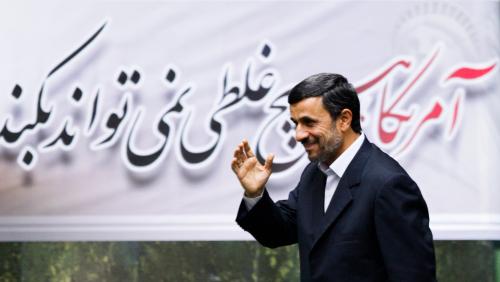
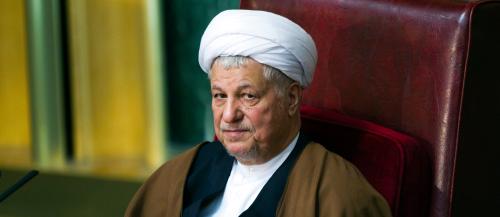

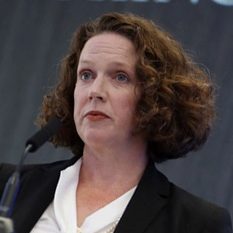
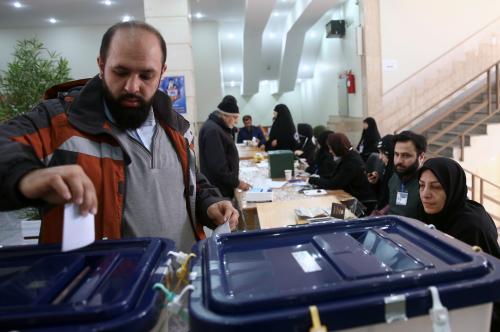
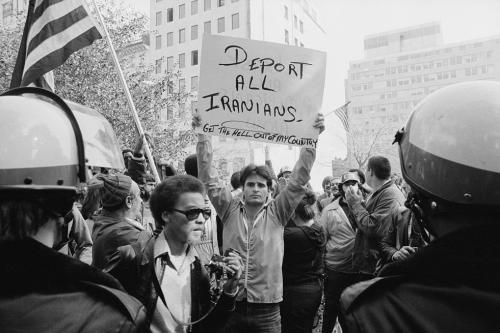
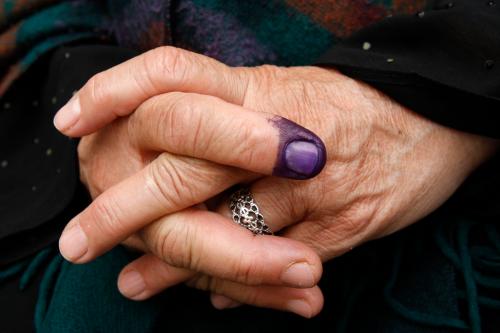
Commentary
Who will rule Iran? Tehran’s presidential election foreshadows succession politics
May 3, 2017